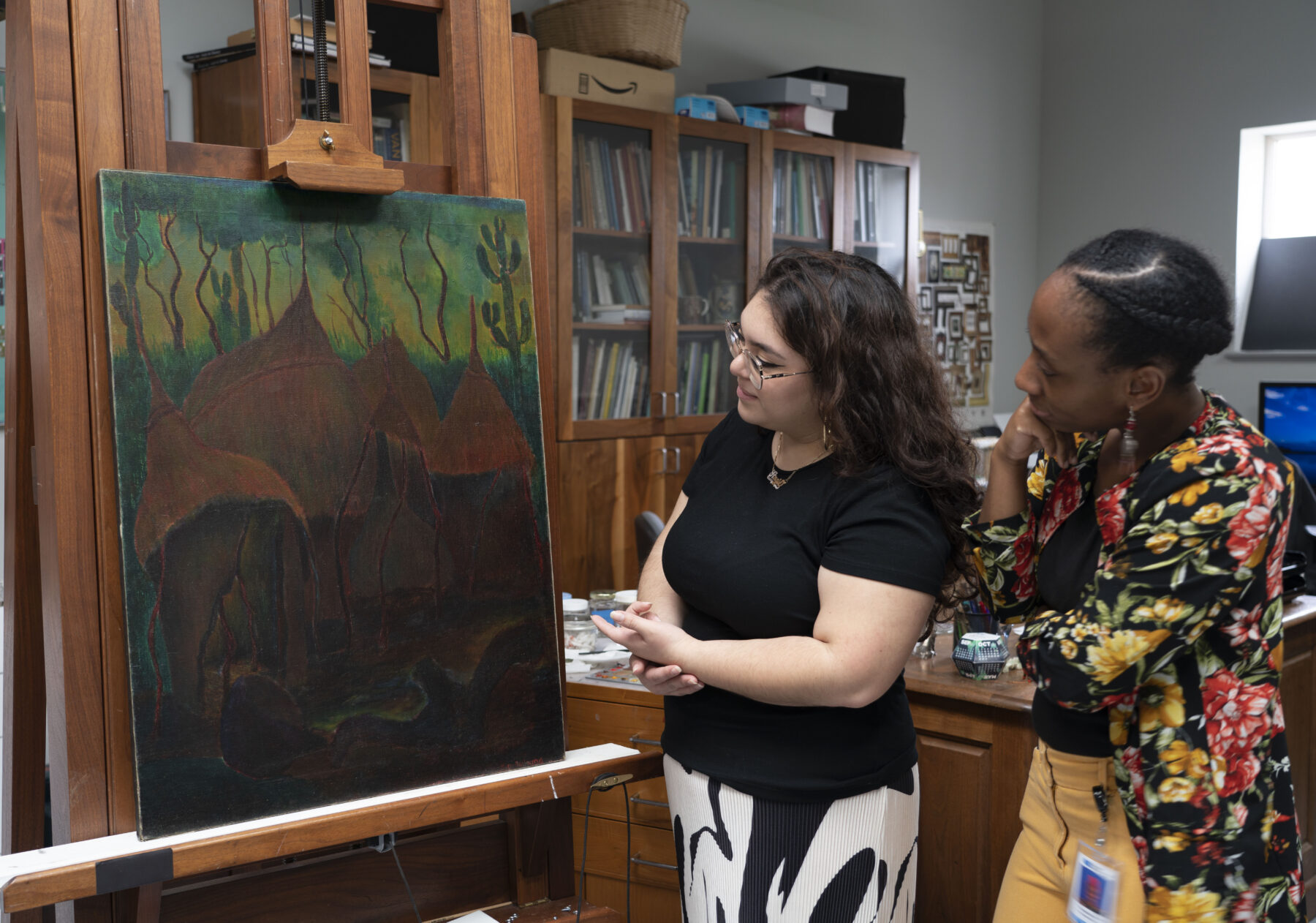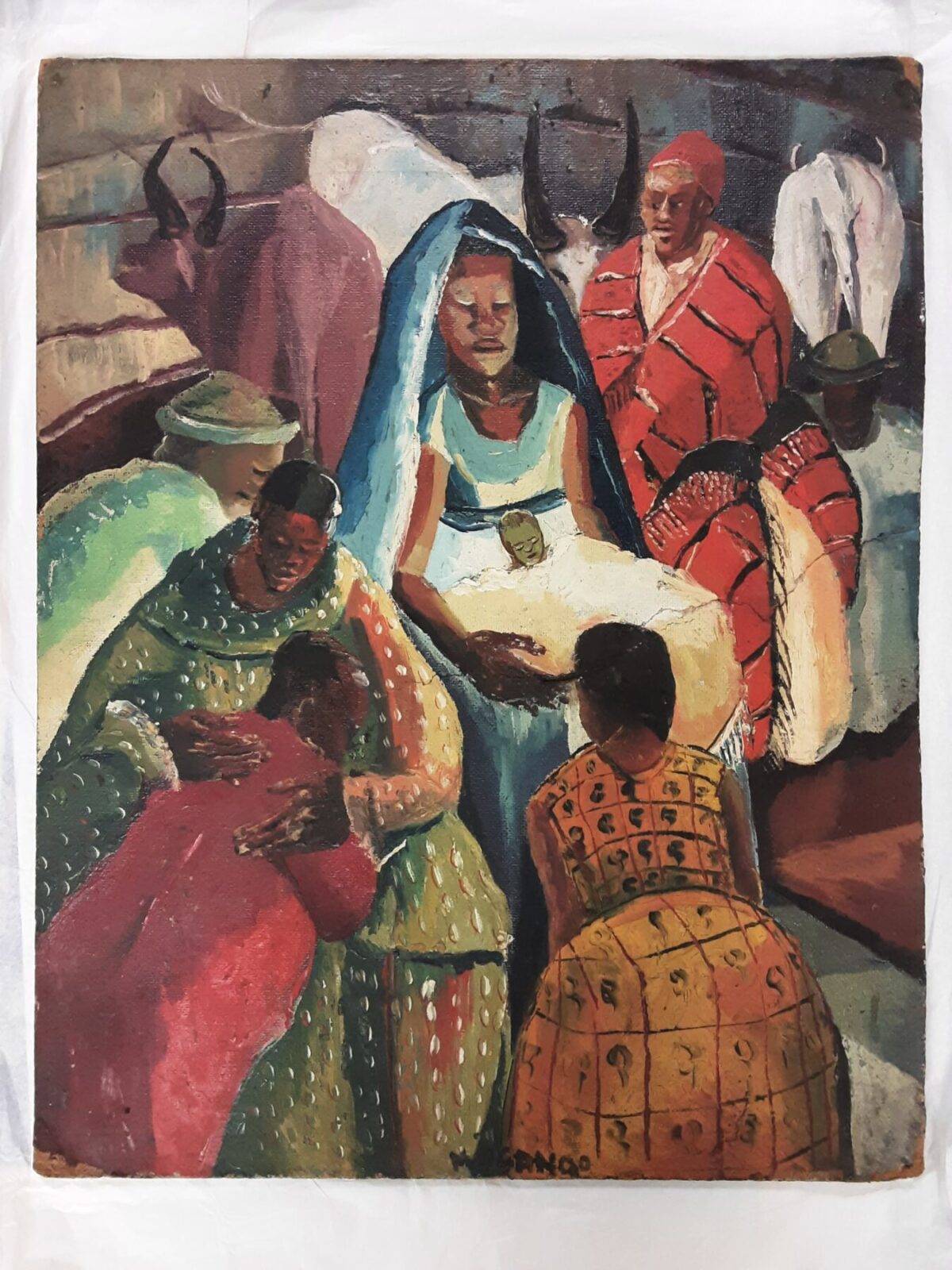Tricky Tape and Finicky Frames

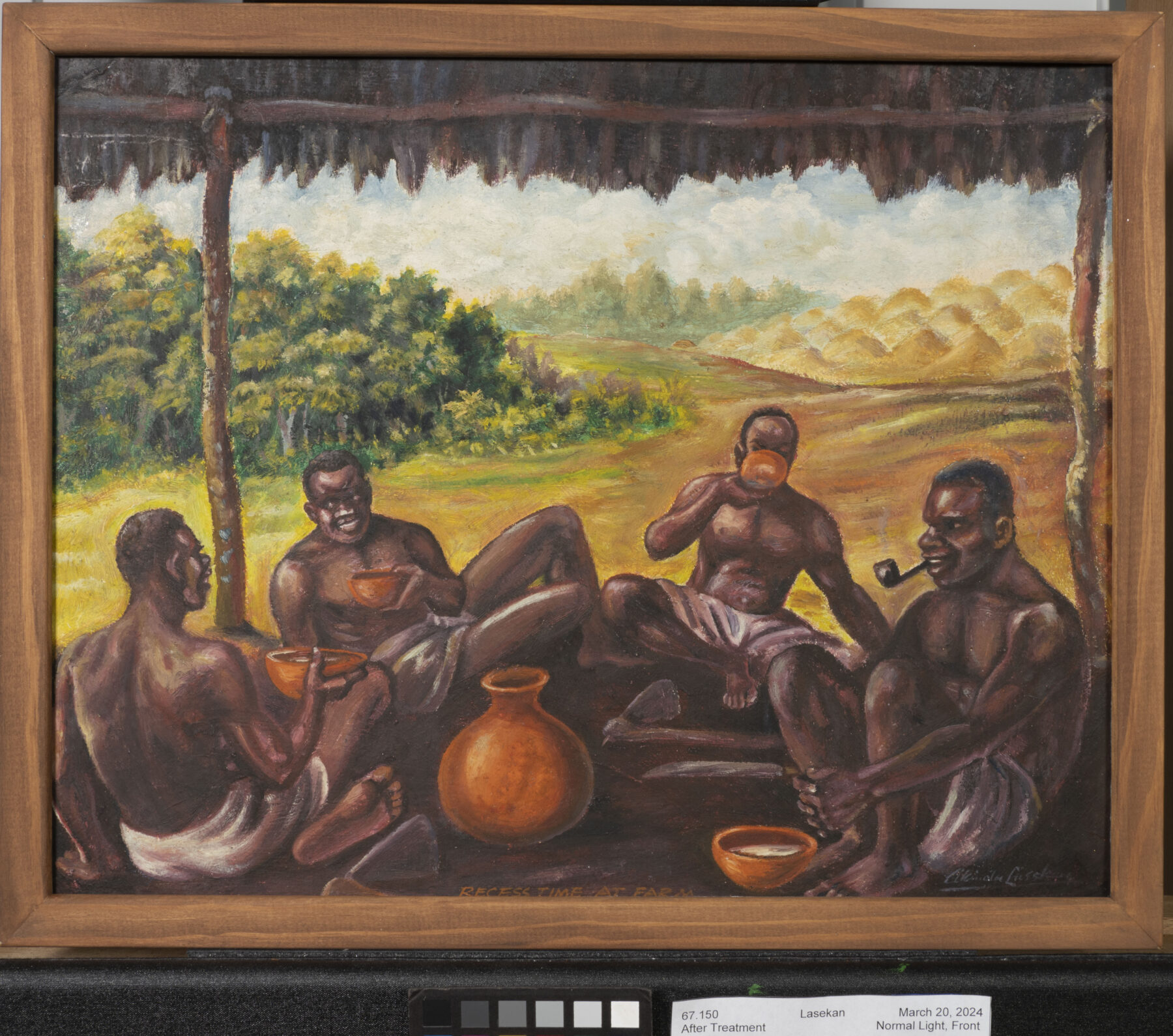
Conservators work like detectives, piecing together a painting’s history using clues found in and on the painting. Various analytical techniques, such as UV reflectance and x-radiography, and extensive research are used to piece together an artwork’s history and identify changes made over time. This detective work is essential to determining which parts of an artwork are original and what may have been added later.
Recess Time at Farm, an oil painting on a thin paperboard, depicts a group of men lounging in the shade and having a relaxing drink together. Their work equipment, such as farm hoes and machetes, can be seen beside them. The artwork was painted by Akinola Lasekan, a Nigerian trailblazer who created easel paintings depicting Nigeria’s people, culture, landscape, and political cartoons critiquing the political climate of the 1940s and 50s. He utilized easel painting to express the beauty and humanity of Nigeria and its people. His mastery and use of Western art forms contradicted the narrative of European superiority and African inferiority. You can read more about the relationship between Lasekan and the Harmon foundation in this blog post.
Examination and Condition
This piece, in particular, has been framed in an interesting manner. The frame consists of a thin wooden molding with a wide “shelf” at the back on which the painting rests. This differs from most traditional frames, which usually have a ledge or “rebate” on which the front of the painting rests.
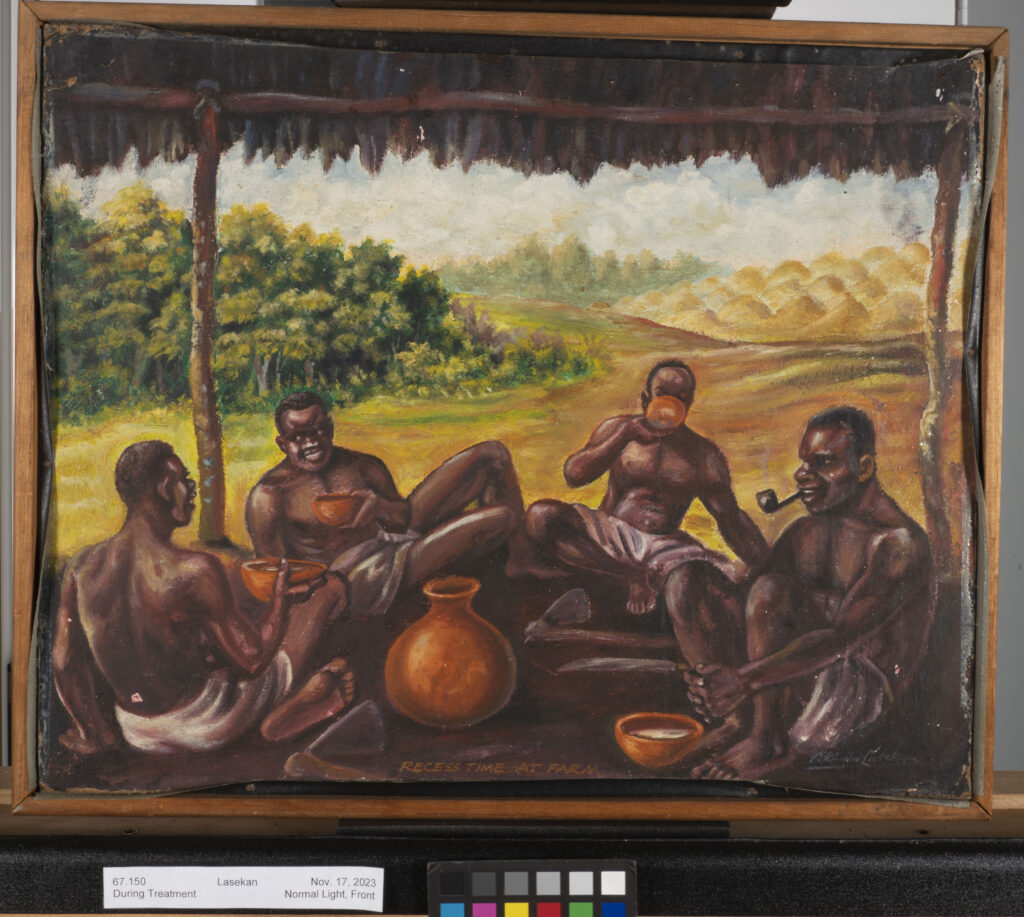
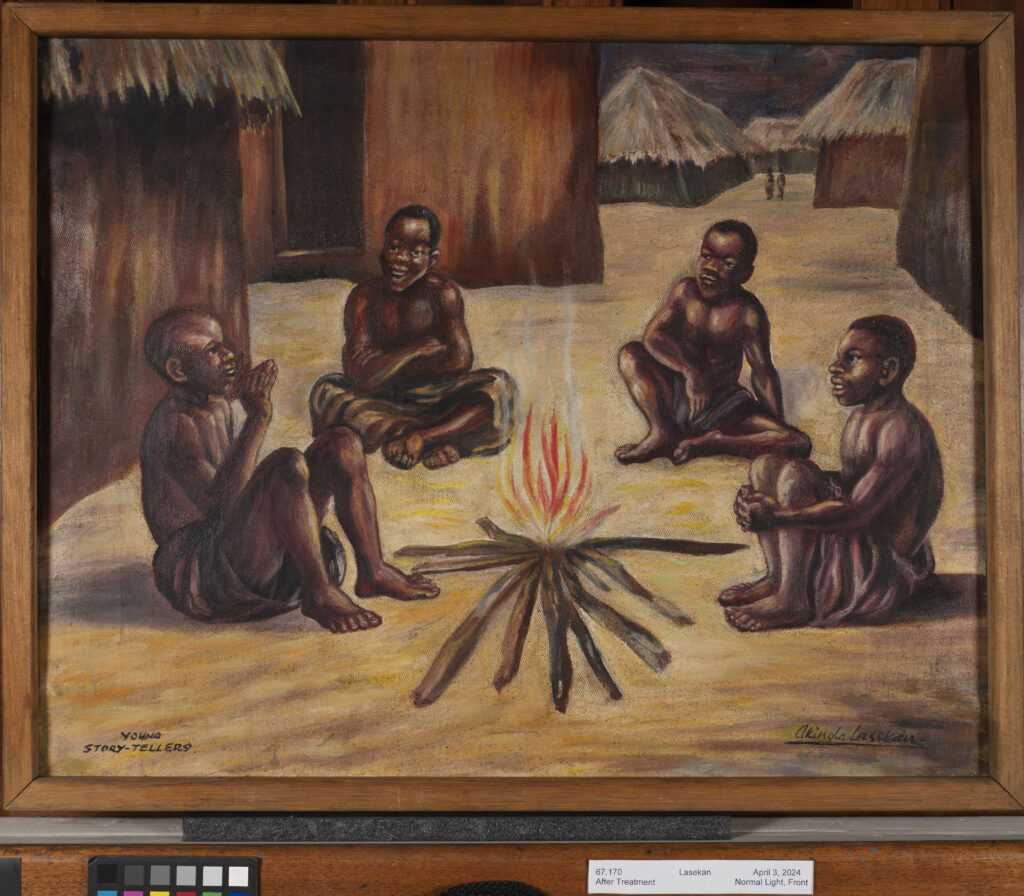
The painting, executed on a thin paper fiberboard, had tape applied to its edges at some point in its history, possibly to protect the edges of the work when handled. However, the tape degraded, curling up and leaving an unsightly silver residue behind.
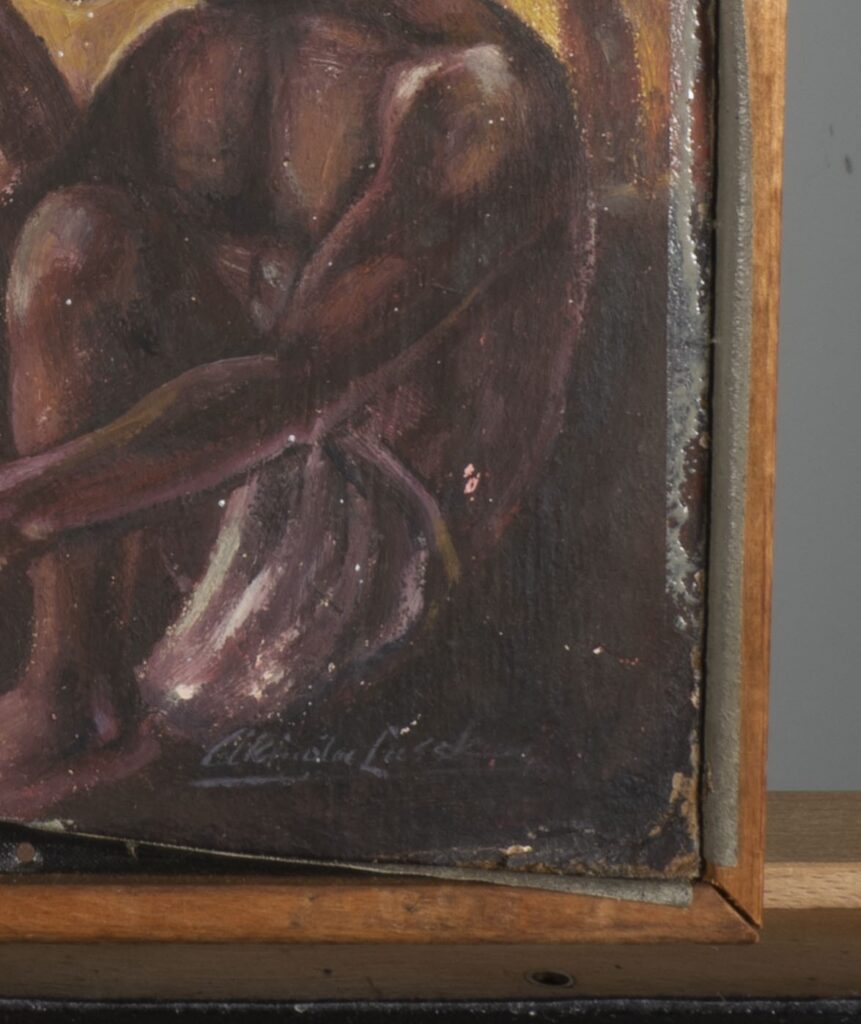
During the initial survey of the collection in 2022, it was noted that many paintings had degraded black cloth tape placed around their perimeter. In December, I connected with Fisk University Galleries and their registrar, Christine Gostowski, who had also noticed black tape around the edges of some of the paintings donated to them by the Harmon Foundation. This tape was likely not original to the painting and may have been applied during the collection’s time under the Harmon Foundation’s care.
Recess Time at Farm had been secured to the frame using long nails pierced through the tape and the fiberboard into the wooden frame and clenched at the ends. Although the tape curled up and off the surface, these nails reinforced its attachment.
Despite these issues, the board’s support was stable and in fair condition overall. The board was slightly warped and had a large crease in the upper left corner and a smaller crease at the bottom right corner. All the corners were slightly bent, and the layers of the board had begun to separate or delaminate at the corners.
The paint layer was in good condition, and little to no cracking was present, likely due to the stability of the board support. Unlike canvas, which can be stretched and may fluctuate in tension over time, a board does not expand and contract as much, preventing cracking. Despite this, a few minor losses were scattered across the painting, and some lifting paint was associated with the delaminating corners. Two larger losses could be seen on the figures on the bottom left and right corners. Several tiny silver-colored accretions could be seen in many areas of the painting, particularly on the figure sitting at the edge.
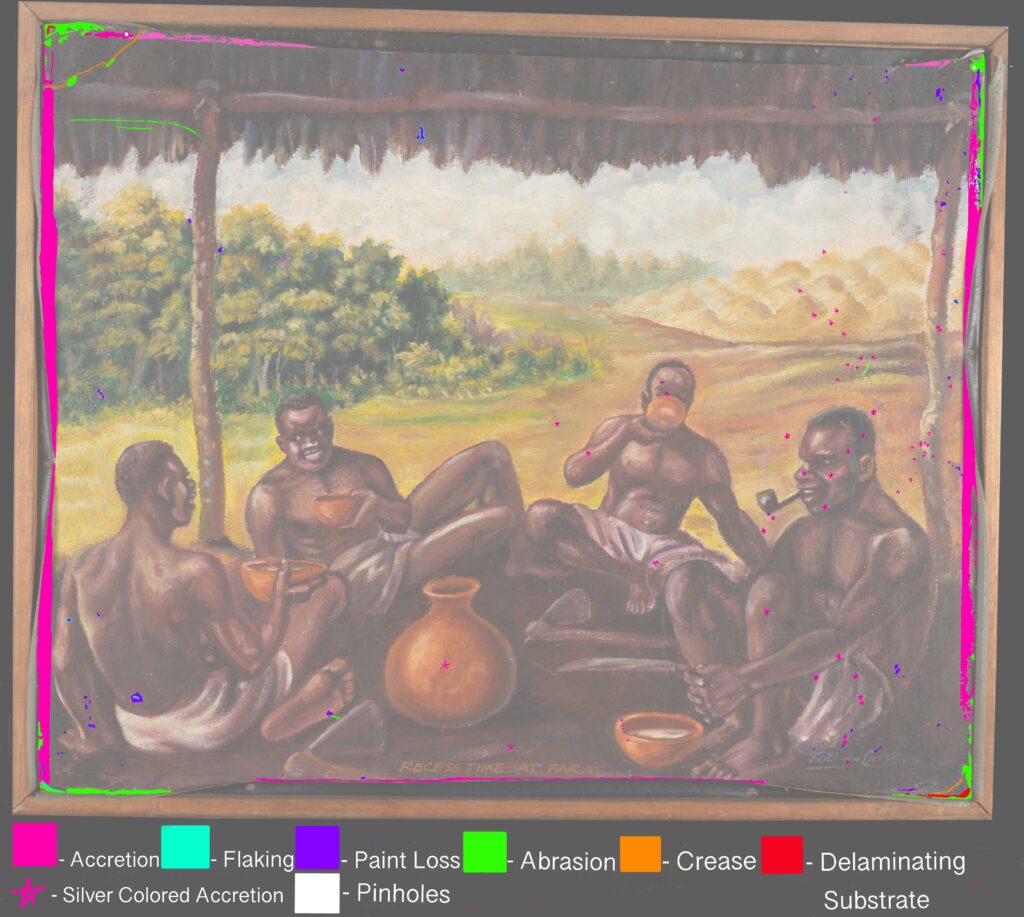
Treatment
The painting was first removed from its frame, making accessing the corners and edges easier. The tacks anchoring the painting to the frame were carefully unclenched from the back, pushed out the front using pliers, and gently levered out. Solvent testing was conducted on multiple areas of the painting using multiple solvents and small cotton swabs to determine what solvents could safely be used on the surface. Water was safe to use on the surface of the painting, allowing me to consolidate areas of flaking and losses with sturgeon glue. This protein-based adhesive is reversible with water. Dilute sturgeon glue was also used to stabilize the upper left corner of the painting, which had been creased. The delaminating corners of the panel were stabilized using a synthetic, water-soluble adhesive. The adhesive was fed between layers using a small, thin blade. The corners were then clamped using small pieces of wood and silicone release paper and left to dry overnight.
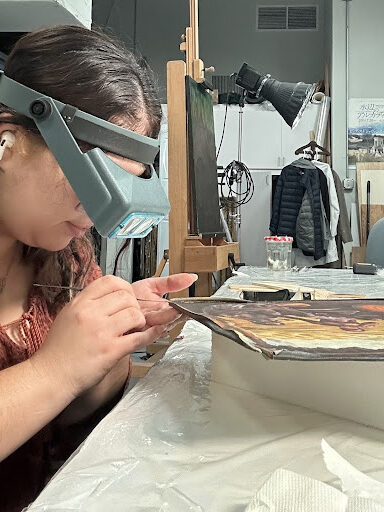
layers of paperboard.
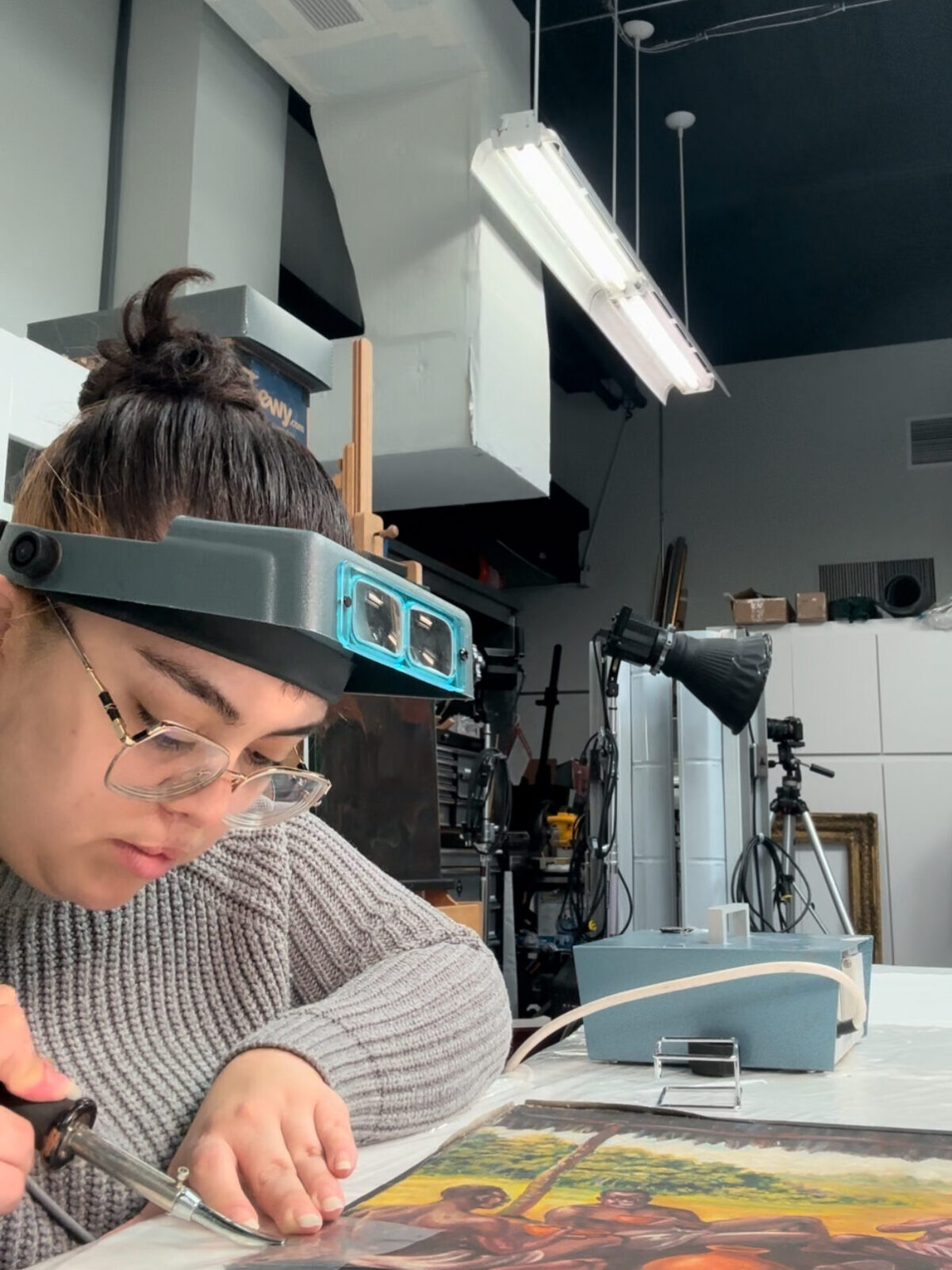
amounts of DI water to relax the degraded tape.
Solvent tests were also conducted on the shiny residues left behind by the lifting tape; however, none of the solvents tested could safely remove the residue. Instead, it was determined that a safer option for the painting would be to relax the tape using a small heated spatula, water, and mylar. Small amounts of DI water were applied to small sections of the curled-up tape with a brush. Mylar was placed over this area, and the heated spatula was gently placed against the tape, creating small amounts of steam. This relaxed the tape and allowed it to lay flat. The tape was then re-adhered to the surface of the painting using a reversible, heat-activated adhesive. The tape was now significantly less visually distracting and hid most of the adhesive residue. This easily reversible treatment allows for future conservators to remove this non-original tape in a safer, more effective manner.
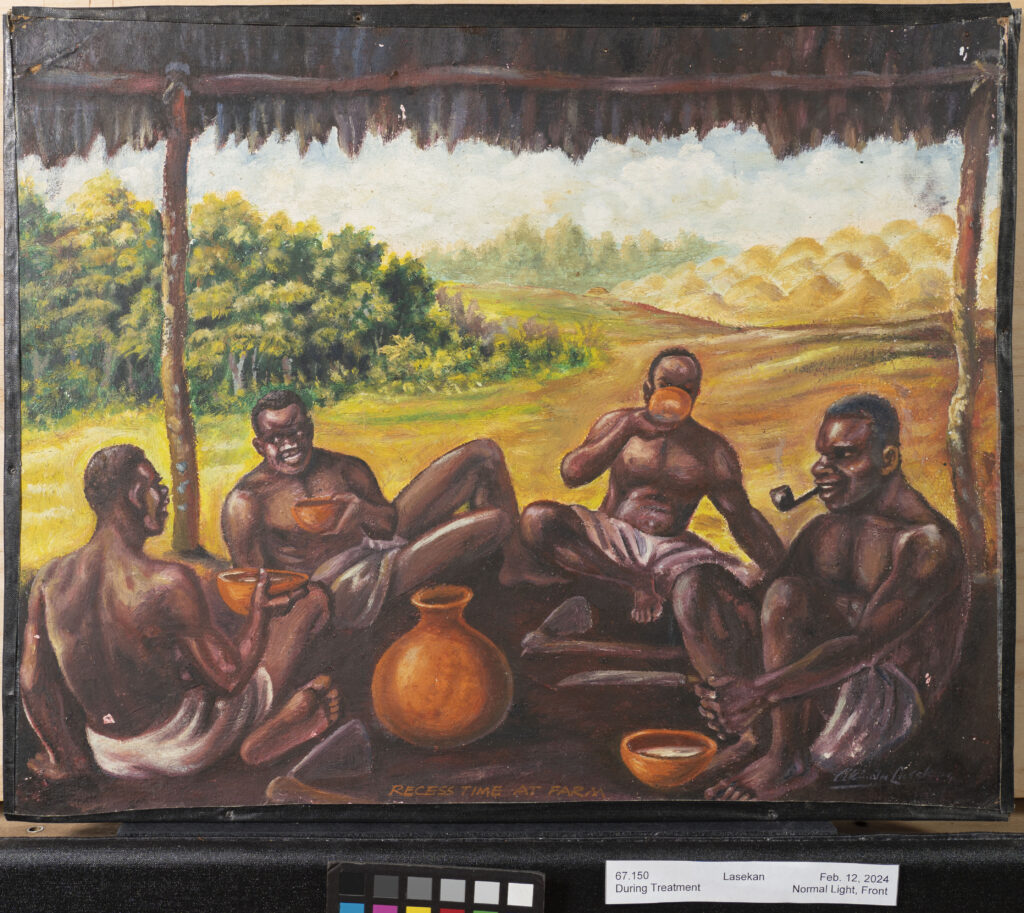
After re-adhering the tape, areas of loss were filled using a reversible, conservation-grade fill material, creating fills that were level with the paint surface and matched the texture. Finally, the areas of losses, remaining adhesive residues, and accretions were inpainted using a conservation-grade paint medium, allowing the work to be viewed as intended by the artist.
Due to the unusual way the board had been secured to the frame, it was determined that a new frame would better support the painting. A new L-shaped frame made of pine was constructed and toned to match the color of the original frame. Instead of having the painting sit on a “shelf” and nail through the front of the painting, the new frame has a rebate that the painting can rest against, offering more protection. The new frame also hid the black tape, allowing viewers to focus on the figures and landscape painted by Lasekan.
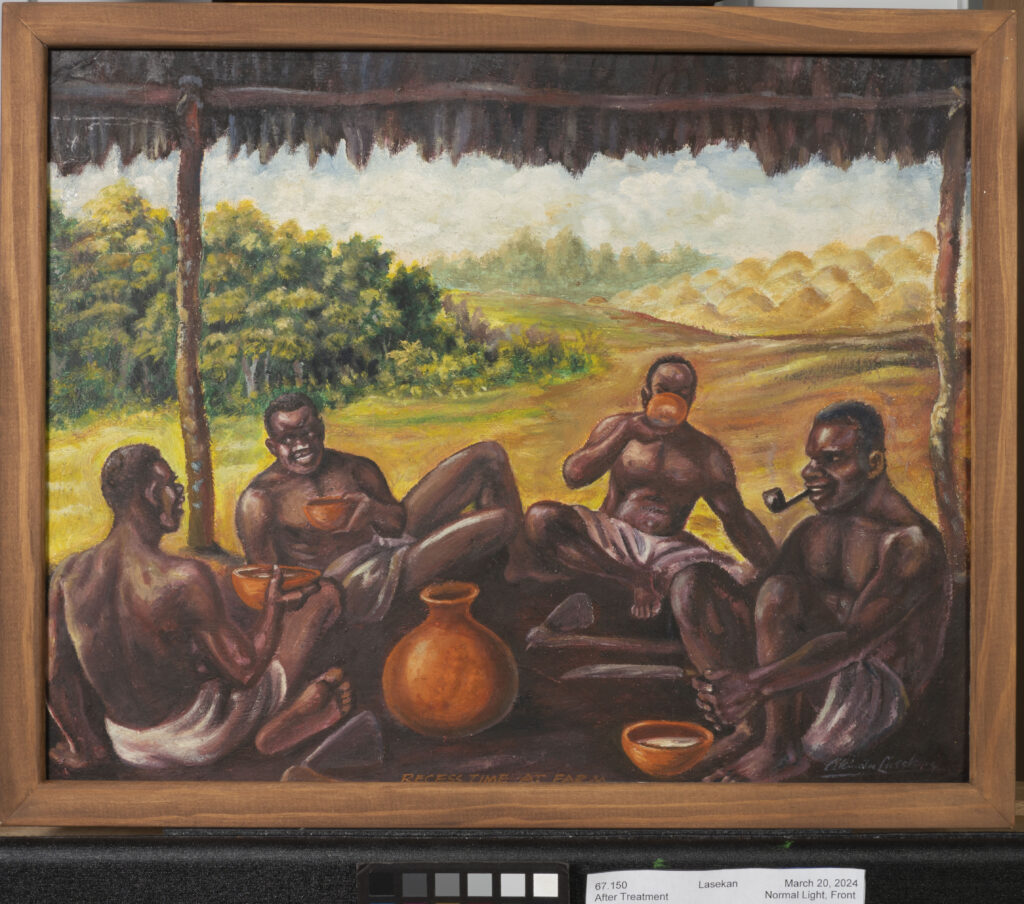
This piece is currently on view at the Chrysler Museum of Art until August 11th as part of I am Copying Nobody: The Art and Political Cartoons of Akinola Lasekan, an exhibition created in partnership with Hampton University Museum.
Explore other articles like this
Art Spotlight: The Abandoned Hut by Mordecai Buluma
In this blog post Angie and Tashae discuss the symbolism behind The Abandoned Hut by Mordecai Buluma as well as the conservation treatment used to prepare it for exhibition.
Christ in the Manger: Virginia’s Most Endangered Artifact?
"Christ in the Manger" by Francis Musangogwantamu, along with nine other selected artifacts from other institutions in Virginia, will be featured in an online public voting competition, which will take place from February 20th to March 3rd, 2024. The artifact that receives the most votes will receive the People’s Choice award and a $1,000 grant to be put towards the object’s conservation treatment.
Adventures in Washington D.C.
Tashae and I recently visited the African Modernism in America exhibition at the Phillips Collection and connected with colleagues at two conservation labs, thanks to funds provided by the Mellon Grant for professional development and research.
